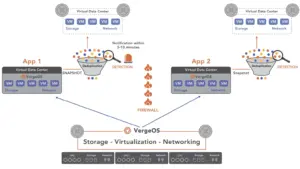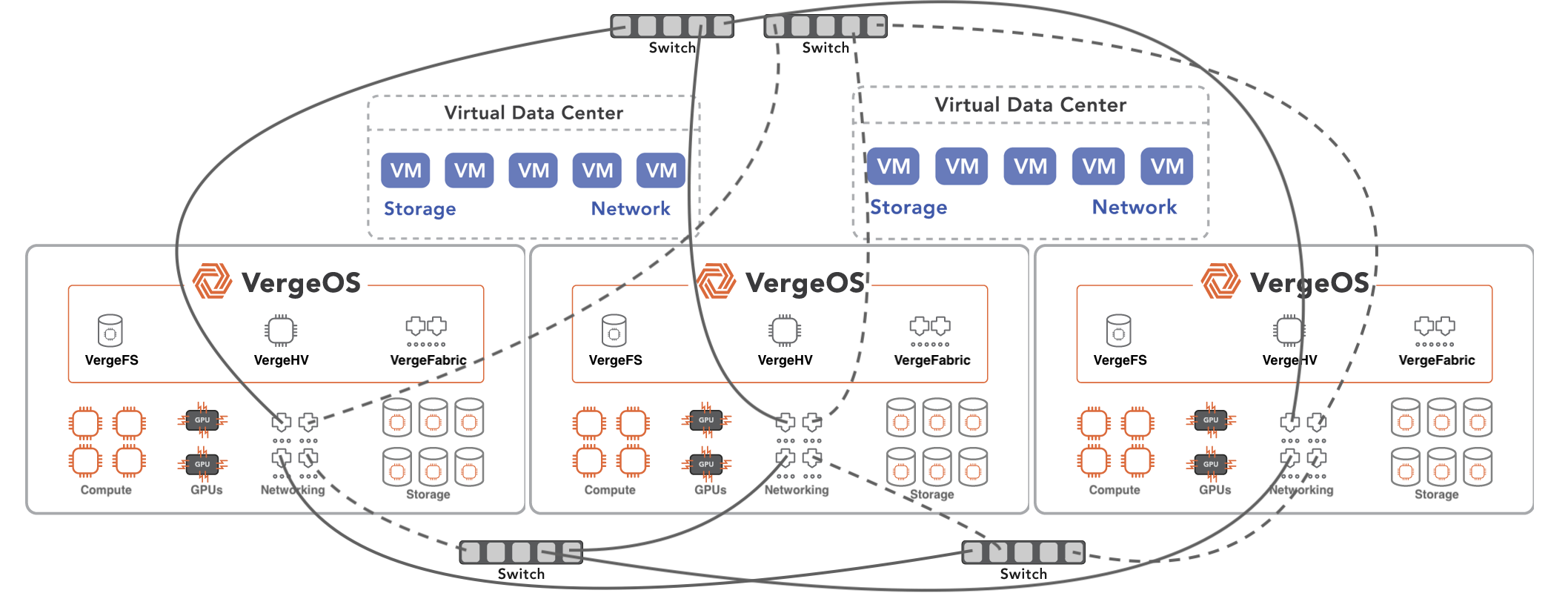Transitioning from VMware to an alternative hypervisor is a significant decision that requires the careful consideration of several factors, especially when protecting a VMware alternative. Data protection and application availability shouldn’t be sacrificed to lower licensing costs. Here’s an overview of the essential features to look for in a VMware alternative to ensure you maintain high standards in data protection while reducing infrastructure costs.
To learn more about ensuring that your VMware Alternative doesn’t take you backward regarding data protection, join our live video broadcast with the team at TruthInIT on June 12th at 1:00pm ET / 10:00 AM PT. Register here.
Integrated Data Protection and Application Availability
When evaluating a VMware alternative, ensuring that the new solution offers robust data protection and application availability is crucial. Look for a solution that integrates virtualization, storage, and networking into a cohesive infrastructure, providing infrastructure-wide availability without additional costs. Also, look for a solution that can leverage your existing backup investment.
Comprehensive Data Availability
Data availability is a critical factor in protecting a VMware alternative. The solution should write data redundantly across multiple nodes and drives, ensuring continuous access even during failures. This drive failure protection should be built into the solution and not require a separate RAID card or external array (although the solution should support the external arrays you have).
However, protecting from a single drive failure is table stakes in the enterprise. Although flash drives are very reliable, when they do fail, they can fail in batches because of write thresholds. It is critical to look for a solution that can handle multiple drive or server failures without data loss or downtime. This capability should be integrated into the system to simplify the data protection process and reduce costs.
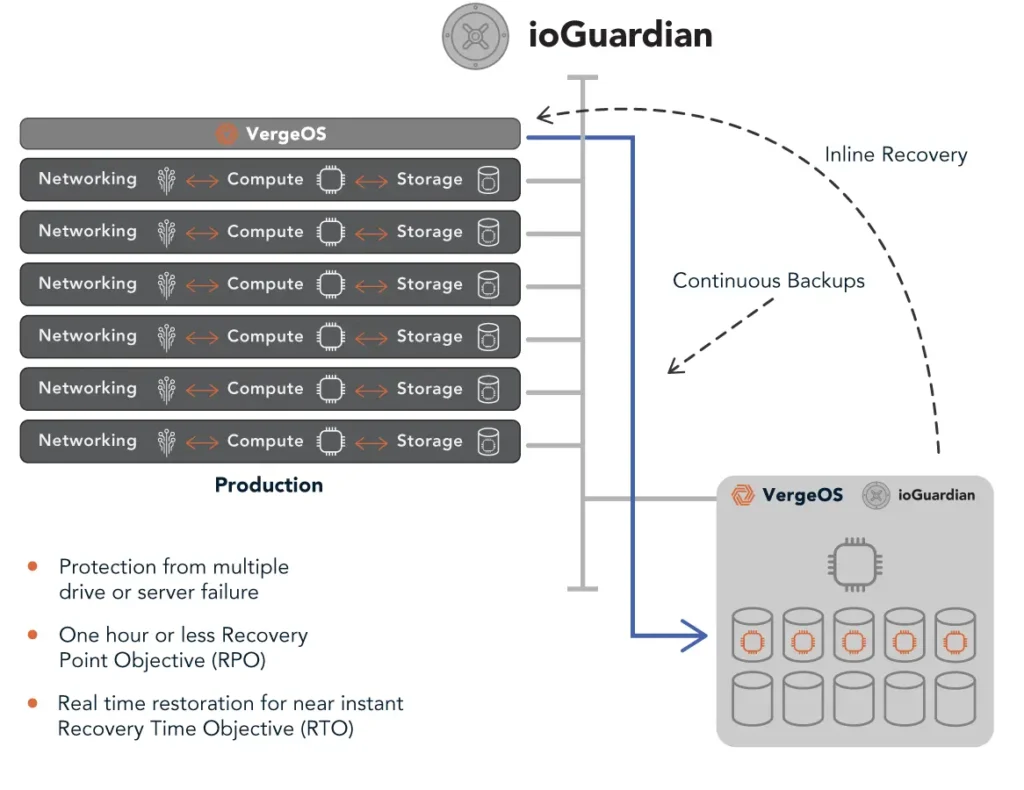
VergeOS’ method of ensuring data availability involves writing data redundantly across multiple nodes and drives, ensuring continuous access even during failures. In the case of multiple drive failures, ioGuardian delivers real-time missing data segments to VMs, allowing continuous operation even during significant hardware failures. This feature is integrated into the system, simplifying the data protection process and reducing costs.
Automated Application Availability
Another aspect of protecting a VMware alternative is ensuring the solution guarantees application availability. In the event of a server failure, all virtual machines (VMs) should seamlessly migrate to other servers within the instance. In the case of planned downtime, this migration should be transparent. In the case of a hard server crash, the outage should only be for as long as it takes to reboot the VMs on the remaining hosts. Ideally, the solution should use predictive algorithms to determine the best possible server node for VM relocation, ensuring minimal disruption and optimal performance.
VergeOS ensures that in the event of a server failure, all virtual machines (VMs) seamlessly migrate to other servers within the instance. It employs an AI algorithm to determine the best possible node for relocation, ensuring minimal disruption and optimal performance.
Advanced Snapshot Technology
Protecting a VMware alternative requires advanced snapshot technology. Unlimited snapshots with minimal performance impact are a must-have. The problem is that most VMware alternatives have restrictive snapshot capabilities and can’t play a significant role in data protection. Instead, look for technology that allows frequent snapshots that act like independent, standalone clones, which is vital for compliance with backup best practices like the 3-2-1 rule. Of course, the solution must integrate deduplication so that these clones consume less disk capacity, making them impractical for long-term retention.
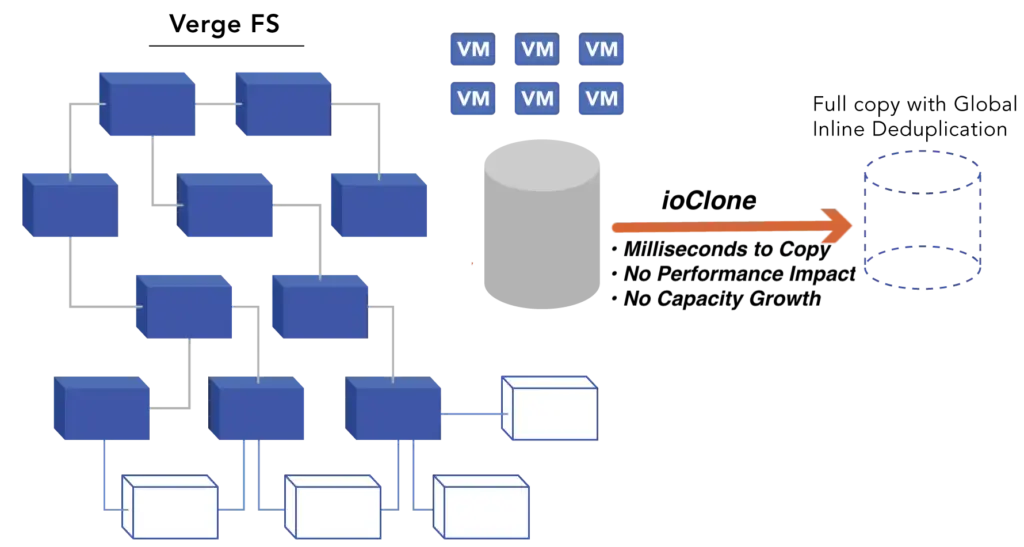
VergeOS provides advanced always-on global inline deduplication. Because of its integration into the core of VergeOS, our deduplication significantly reduces storage capacity requirements while maintaining high performance with minimal CPU and RAM consumption. Instead of using legacy snapshot techniques, our ioClone snapshot technology leverages our deduplication, allowing more frequent snapshots that act like independent, standalone clones, vital for compliance with backup best practices like the 3-2-1 rule.
Holistic Disaster Recovery
The most critical aspect of protecting a VMware alternative is making sure it can provide a comprehensive disaster recovery strategy. That strategy should be straightforward to implement and manage, and data replication should be integrated into the solution. However, most VMware alternatives stop there and continue to make DR complex, sewing together multiple data protection events, data, network configurations, storage configurations, and VM boot configurations.
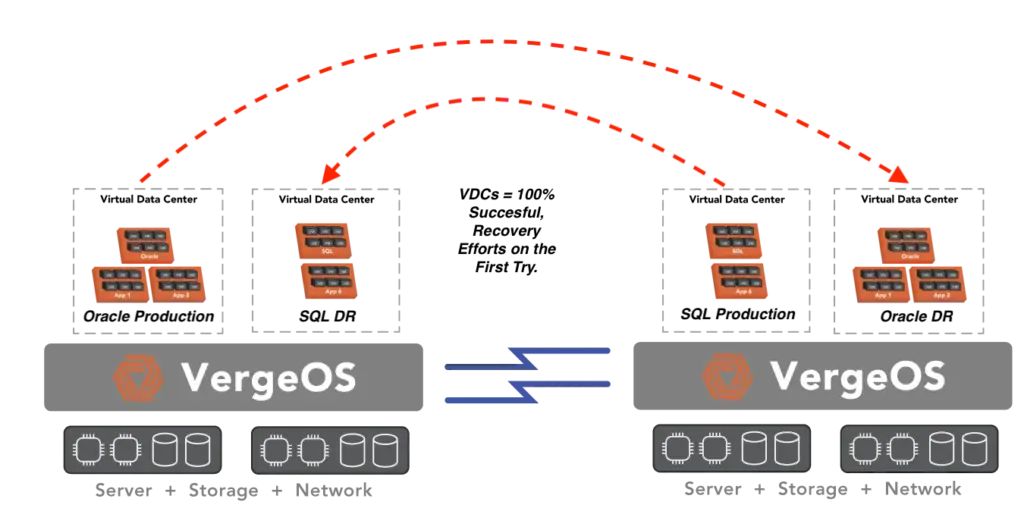
VergeOS uses multi-tenant virtual data centers (VDCs) that encapsulate the entire data center, including VMs and network settings. This allows easy replication and ensures functionality on different hardware during a disaster. Thanks to encapsulation, DR is a straightforward movement that includes all the necessary components for disaster recovery.
Flexibility with Backup Solutions
Even with integrated data protection, protecting a VMware alternative may require a third-party backup solution for various reasons, such as compliance or vendor-independent data copies. The VMware alternative must leverage your organization’s backup software and storage investment. VergeOS can enhance your data protection using the above capabilities and even augment it using the below:
Backup of Last Resort
VergeOS supports exporting the environment to a commonly accessible storage location, like an NFS mount point. This feature helps maintain an independent copy of data outside the VergeOS production instance. It also enables you to leverage the backup software’s capability to copy data to the cloud or to tape.
Browsable Single-File Restoration
While VergeOS snapshots can be browsed and single files copied out of them, some VMs will benefit from browsable, single-file restoration from backup copies. VergeOS supports installing operating-specific agents inside VMs for this purpose. Push installation of agents and resource requirements of those agents have improved significantly over the past few years. Since VergeOS is more efficient at CPU utilization than VMware, there is no perceivable application impact when using them.
Hosting Third-Party Backup Software
Hosting third-party backup software within VergeOS’ infrastructure adds another layer of flexibility. Our VDCs enable you to place the backup software and its repository in a VDC, which provides an internal firewall to add another layer of resilience for protected data copies. Also, VergeOS supports hard disk drives in addition to Flash, which may be more appropriate for the backup storage use case.
Conclusion
Selecting a VMware alternative requires looking beyond license cost savings and ensuring you do not compromise on data protection and application availability. Look for a comprehensive suite of capabilities, including automated high availability, advanced data protection, innovative snapshot technology, and holistic disaster recovery. The flexibility to integrate with existing backup solutions and host third-party software within virtual data centers further enhances the appeal of a cost-effective and resilient solution for modern IT infrastructures.
Next Steps
- Schedule a Technical Deep Dive
- Watch our On-Demand Webinar and Demo, “High Availability, Data Protection, and Disaster Recovery for VMware Alternatives”
- Download our White Paper: “Creating an Infrastructure-Wide Ransomware Resiliency Strategy”
- Still Researching? Subscribe to our newsletter for more Infrastructure News.


